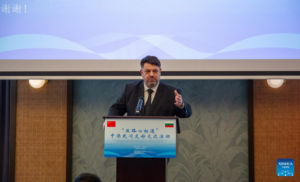China’s 996 culture leading to subtle enslavement of the working population
China’s economic prowess, which has elevated its global stature in terms of global finances, has nonetheless come at the expense of regressive work culture and labour exploitation practices. The infamous 996 work culture has devasted the working populations mental and physical health apart from also drawing comparisons to modern enslavement strategies.
The term 996 is derived from the expectations that employees are mandated to fulfil work requirements from 9 a.m. to 9 p.m., six days a week, resulting in a regressive 72-hour workweek. This toxic work culture has been criticized globally for often exceeding the standard 40-hour workweek common in many other countries around the world. Endorsed by some prominent billionaires in the country, the toxic work environment has also resulted in anger and resentment within Chinese working communities due to the bonded nature of its work ethics.
Although, at an initial glance the regressive 996 work schedule may appear to be productive in its nature, various studies conducted in China have often stated that elongated work hours have led to higher fatigue and stress among employees resulting in declining productivity. Such form of burnouts has also diminished the overall performance of not only employees but has also proved to be detrimental for China’s post-pandemic recovery.
The gruelling work environment has also led to deprivation of a sense of community within the working population in the country causing loss of meaning and severe mental health disorders among the young generation who are starting out in their professional careers. Moreover, the limitation of personal growth in professional spheres of employees has also resulted in lack of motivation within the work force to excel or enhance productivity.
The toxic culture is also criticized for not allowing the working population with enough time for personal life, family and hobbies leading to increase in mental health issues as well as lack of motivation and incentives. Apart from disrupting personal lives, the 996 culture has been proven to disproportionately disrupt and affect women and individuals with caregiving responsibilities far more than the other categories of the working population. It has also proven to create barriers for inclusive workspaces and has prevented employees from fulfilling their family obligations. Furthermore, the toxic work environment, driven and committed to only producing and delivering has also claimed various lives, especially among the young population, with some even committing suicides. The news of a 25-year-old boy’s death working for a streaming platform in China reignited the debate on ending the worrisome environment lately in China. Although, authorities have begun limiting the gruesome work environment, many are beginning to believe if the decision to intervene may have come too late.
Commonly practiced in the IT and tech industry in China, the 996 culture is therefore beginning to see greater resistance among local population due to the enslavement mentality and practice it endorses. Critics of the culture have argued against the enforcement and compulsion of such methods in workplaces claiming that it fosters an environment where employees are discouraged from expressing their dissatisfaction or asserting their rights. Fear of repercussions have also for long prevented employees from speaking out openly against the toxic work culture; however, with some recent deaths, the case against the practice has found more ears.
The downturn of the working population’s overall morale is significantly expected to impact its economic overtures that the Chinese Communist Party (CCP) has been deeming as its post-pandemic recovery. The upcoming year is going to be a daunting task for mostly firms that will be looking towards damage control, mitigating the mistrust that has prevailed in many workspaces in lieu of generating greater profits for the company. Hence, it is yet to be seem in what scale the pushback from the working population comes in, but a pushback against profit generators is eminent especially when the CCP claims itself to be against exploitative practices, a slogan that it fought under the banner of during the revolution to attain power almost eight decades ago. Least to say, the 996 culture has given rise to frustration and resentment within the Chinese population and can only be expected to cause greater trouble given the daunting nature of the work environment and the repulsion it is expected to generate among working employees.













